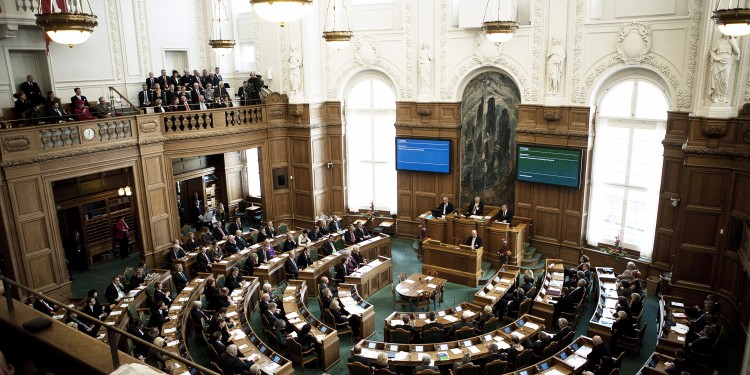Danish minority government: Here is what they want to do

Outcome of the elections: A minority social democratic government headed by Prime Minister Mette Frederiksen. Today she will be appointed by the Danish Queen, and on 27 June, she will present her new team of ministers.
The article continues below.
By Bente D. Knudsen Picture: Folketinget/Anders Hviid
The new government is a result of the June 5th elections, which enabled the so-called “red parties” to win a majority in the Danish Parliament, Folketinget.
At the general election the red coalition of; Socialdemokratiet, Enhedslisten, Socialistisk Folkeparti and Radikale Venstre gained a majority of 91 mandates out of the possible 179 mandates in the Danish Parliament.
You might have been wondering what has been going the last 20 days since the elections?
The leader of the Socialdemokratiet, Mette Frederiksen, had been given the mandate by the Danish Queen to try to form a government.
A formality really, as it was the outcome of the elections, where she achieved a “red” majority, which enabled her to be appointed to lead these negotiations.
The article continues below.
The outcome of the negotiations between these four parties is an 18-page document where they describe what their political understanding is.
It is not a government paper, what in Danish politics is called a regeringsgrundlag, as the four parties will not be sitting in government together.
Instead, it is a declaration of intent, the basis upon which the four parties point to Mette Frederiksen as the new Prime Minister, heading a minority Government of social democrats.
Once the new government is formed, and at the start of the new parliament year in October 2019, the money to finance the measures, which the four parties have written into the 18 page document, need to be found through negotiations.
Either between the four red parties supporting Mette Frederiksen’s government, or together with other parties in parliament, who want to support the proposals (see below our description of how compromise deals are often negotiated).
The article continues below.
The 18-page paper describes the intent of the new government concerning for instance:
Danish childcare: In the institutions for childcare ( børnehaver and vuggestuer) there should be a minimum quota of adult caretakers per child. The suggestion is 1 adult per 3 children in a vuggestue and 1 adult per 6 children in a børnehave. How to finance this has not been put forward.
Environmental Strategy: A binding law to reduce Denmark’s CO2 emission by 70 percent in 2030. How to do this, and how to finance it, has not been put forward.
Foreigners: Denmark is again to take UN quota refugees and the center on the island of Lindholm, where criminal asylum seekers who have been expelled where to be placed will not be made. Where they will go instead has not been put forward.
Cigarettes: An increase in tariff on cigarettes is to help reduce the amount of young people who start smoking. How much the increase will be has not been put forward.
At the general elections, 84,8 percent of voters voted. A total of 3,569,521 votes were cast out of 4,219,537 possible.
The Danish parliament has 179 seats, 175 are elected in Denmark, 2 on the Faeroe Islands and 2 on Greenland.
Number of seats at the June 2019 election per party:
Red
Socialdemokratiet (S) 48
Enhedslisten (EL) 13
Socialistisk Folkeparti (SF) 14
Alternativet (ALT) 5
Radikale Venstre (RV) 16
Blue
Dansk Folkeparti (DF) 16
Venstre (V) 43
Liberal Alliance (LA) 4
Det Konservative Folkeparti (KF) 12
Nye Borgerlige (New in parliament) 4
The article continues below.
Forlig and fællesskab
Two words you hear a lot in Danish politics are forlig (political pacts between parties) and fællesskab, community feeling and cooperation.
What makes Danish political culture special is that it is shaped by a deeply engrained tendency to co-operate, also across party lines.
This has been going on for about a hundred years, and it has to do with Denmark having mostly had minority governments. So, there was a direct need to co-operate to make things work.
An effect of this attitude is the comparative stability of Danish politics.
Another sign of this is the forligskultur: picking out controversial issues, for example the school system and making a pact with a large majority in Folketinget that transcends party lines and time horizons, a pact that even the next Folketing election cannot easily undo.
These pacts are binding, and contracting parties have a veto right, so it cannot be undone lightly.
There’s a strong sense of fællesskab among Folketing members, a strong sense of collegiality and even long-standing friendships across party lines.

